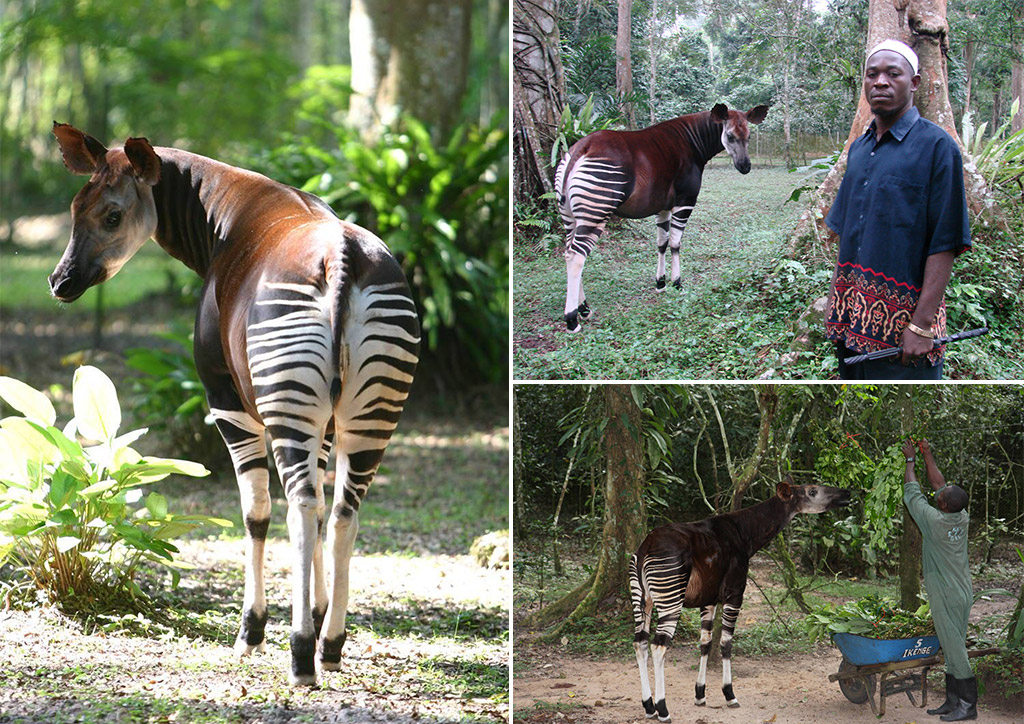Okapi wildlife reserve is found in the North eastern region of Democratic Republic of Congo and it covers almost 1/5 of the Ituri forest. The reserve is also part of Africa’s largest drainage system and the mighty Congo River. The reserve has over 30,000 endemic Okapis that call the reserve a home as well as 5000 primate species. The reserve is blessed with the beautiful scenery which includes waterfalls on rivers, Ituri and Epulu. The inhabitants of the area are the traditional nomadic pygmy Efe and Mbuti hunters. The wildlife is a home to a number of floral species as well as endemic and threatened species. Part of the Ituri forest is under the reserves protection and 1/6 of the existing Okapi population worldwide. The dense evergreen `Mbau’ dominates a Pleistocene refuge and forests which are semi green in nature. It is also a combination of swamp forests [these grow in nearby waterways] and clearings commonly known by their local name `Edos’
The reserve was established in 1992 and declared world Heritage site in 1996. The Okapi wildlife reserve is as well a habitat to the world’s rarest flora species, hospitable indigenous people and other animal species besides the Okapi. The wildlife reserve has an area cover of 13,700 square kilometers which is a half of the area of Yellowstone national park. Okapi wildlife reserve is a rich biodiversity which includes water chevrotain, forest buffalos, chimpanzees, bongo antelopes, variety of insects and several bird species among others.
ITURI FOREST
The forest acts as a cultural center for the true forest people that is the Efe and Mbuti pygmies who are specialists in gathering and hunting within the deepest parts of the forests. These have had unique cultural traditions and life styles for centuries. They have as well participated in harmonious barter trade with neighboring communities such as Bantu cultivators which has brought harmony among the people
THE OKAPI
The Okapi is referred to `Okapia Johnstoni or forest giraffe’ which is one of the oldest mammals left on earth. To the western parts of the world. Okapi is known since the early 20th century and it’s impossible to see Okapi in the wild due to its shyness, elusiveness and gentleness. It has a remarkable natural defenses against its predators. The okapi has a great significance cultural and natural importance to the Democratic Republic of Congo. The okapi is endemic to the country and thus has been protected since 1933. The Okapi has suffered precipitous and perilous decline in numbers because of mining, poaching and deforestation.

According to the conservation strategy workshop of 2013, the okapi population had plummeted more than 50% in a period of three generations. Later the Okapi was declared endangered by the IUCN and the species formerly belonged to the red list of nearly threatened species.
FACTS ABOUT THE OKAPI
Okapi’s dark-blue prehensile tongues with a length of 18 inches. They use the tongue to stripe leaves from plants and to groom themselves. The okapis have a stripped coat which helps them blend in the light shafts produced by tree canopies because of the precipitation and little light. This is common in the equatorial rainforests of Congo. The Okapi’s oily and velvety fur helps them in repelling water and it has the ability to live up to the age of thirty.
Due to the striped coat, the okapis were believed to be related to zebras until it was discovered that they are more related to giraffes. Males have small horns covered in skin and fur as well as have 100 pounds less than females.
The Okapi have a scent gland on each foot which are used in marking their territories where ever they go. The males patrol up to 4km2 whereas the females patrol 0.8 kilometers squared. The okapi calves stay in one place for the 6 to 9 weeks after their birth. It’s also possible for them not to defecate for sixty days as they are trying to avoid predators from tracing them using their dungs scent.
The okapis feed in the morning and evening hours thus diurnal species. So as to drink water the okapis have to spread their legs just like the giraffes. The okapis have a unique stripe patterns which are used by calves in identifying their mothers. The okapis feed on toxic fungi, fruits and leaves accompanied by charcoal and clay to detoxify them and extract the needed minerals from the diet.
These hardly stay within their social groups except when it’s time for mating or mother calf pair. They have an incredible hearing capability to the extent that they communicate at low frequencies without being recognized by predators such as leopards, lions and humans.
